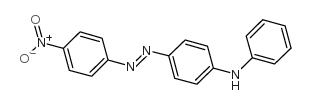disperse orange 1

disperse orange 1 structure
|
Common Name | disperse orange 1 | ||
|---|---|---|---|---|
| CAS Number | 2581-69-3 | Molecular Weight | 318.32900 | |
| Density | 1.24g/cm3 | Boiling Point | 535ºC at 760mmHg | |
| Molecular Formula | C18H14N4O2 | Melting Point | 160ºC | |
| MSDS | Chinese USA | Flash Point | 277.4ºC | |
|
Patch testing with the textile dyes Disperse Orange 1 and Disperse Yellow 3 and some of their potential metabolites, and simultaneous reactions to para-amino compounds.
Contact Dermatitis 67(3) , 130-40, (2012) It is known that, in vitro, human skin bacteria are able to split disperse azo dyes into the corresponding aromatic amines, some of which are sensitizers in the local lymph node assay. We hypothesize that the molecules of disperse dyes migrate onto the skin w... |
|
|
Chlorination treatment of aqueous samples reduces, but does not eliminate, the mutagenic effect of the azo dyes Disperse Red 1, Disperse Red 13 and Disperse Orange 1
Mutat. Res. 703(2) , 200-8, (2010) The treatment of textile effluents by the conventional method based on activated sludge followed by a chlorination step is not usually an effective method to remove azo dyes, and can generate products more mutagenic than the untreated dyes. The present work e... |
|
|
Textile dyes Disperse Orange 1 and Yellow 3 contain more than one allergen as shown by patch testing with thin-layer chromatograms.
Dermatitis 22(6) , 335-43, (2011) It is known that some patch-test preparations containing disperse dyes contain impurities with unknown relevance for the development or elicitation of contact allergy.To evaluate the significance of the impurities found in the commercial dyes Disperse Orange ... |
|
|
Photonic crystal fibre as an optofluidic reactor for the measurement of photochemical kinetics with sub-picomole sensitivity.
Lab Chip 12(18) , 3356-61, (2012) Photonic crystal fibre constitutes an optofluidic system in which light can be efficiently coupled into a solution-phase sample, contained within the hollow core of the fibre, over long path-lengths. This provides an ideal arrangement for the highly sensitive... |
|
|
Hepatotoxicity assessment of the azo dyes disperse orange 1 (DO1), disperse red 1 (DR1) and disperse red 13 (DR13) in HEPG2 cells.
J. Toxicol. Environ. Health A 75(16-17) , 991-9, (2012) During the dyeing process in baths approximately 10 to 15% of the dyes used are lost and reach industrial effluents, thus polluting the environment. Studies showed that some classes of dyes, mainly azo dyes and their by-products, exert adverse effects on huma... |
|
|
Late patch test reaction to Disperse Orange 1 not related to active sensitization.
Contact Dermatitis 63(5) , 298-9, (2010)
|